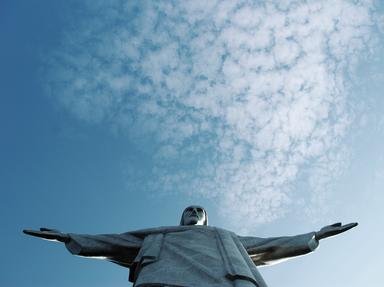Quiz Answer Key and Fun Facts
1. The Olmecs were Mexico's first great pre-Columbian civilization, reaching their zenith in c. 900 BCE. In which geographical region of Mexico did they flourish?
2. Which pre-Columbian civilization built the Pyramids of the Sun and Moon which can still be seen today an hours drive from Mexico City?
3. El Caracol, Spanish for "the snail", is the name given to a Mayan structure which can be seen today at Chichen Itza. For what purpose to archeologists believe El Caracol was used?
4. Which civilization is responsible massive warrior monoliths known as the Giants of Tula?
5. Who or what is Huracan?
6. Which civilization is responsible for the archeological sites at Mitla and Monte Alban?
7. Huitzilopochtli is the Aztec deity believed to have led nomadic peoples to the site of modern day Mexico City. Which animal is closely associated with Huitzilopochtli?
8. Modern day Mexico City is built over an ancient Aztec city and a large lake. Name the city and the lake.
9. The Mayan ruins at Palenque are located in which southern Mexican state?
10. I am a pre-Columbian sculpture found at various archeological sites in southern Mexico. I am depicted in a reclined pose, with my head turned sideways and holding a bowl on my belly. What name has been given to me by modern archeologists?
Source: Author
Betenoire
This quiz was reviewed by FunTrivia editor
ponycargirl before going online.
Any errors found in FunTrivia content are routinely corrected through our feedback system.

